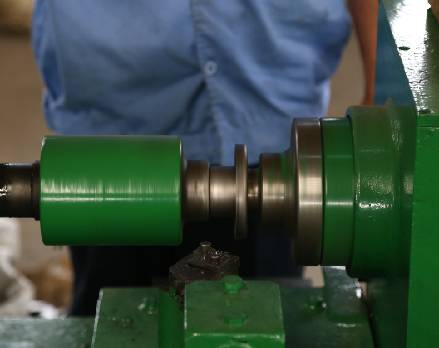 Afrikaans
Afrikaans  Albanian
Albanian  Amharic
Amharic  Arabic
Arabic  Armenian
Armenian  Azerbaijani
Azerbaijani  Basque
Basque  Belarusian
Belarusian  Bengali
Bengali  Bosnian
Bosnian  Bulgarian
Bulgarian  Catalan
Catalan  Cebuano
Cebuano  Corsican
Corsican  Croatian
Croatian  Czech
Czech  Danish
Danish  Dutch
Dutch  English
English  Esperanto
Esperanto  Estonian
Estonian  Finnish
Finnish  French
French  Frisian
Frisian  Galician
Galician  Georgian
Georgian  German
German  Greek
Greek  Gujarati
Gujarati  Haitian Creole
Haitian Creole  hausa
hausa  hawaiian
hawaiian  Hebrew
Hebrew  Hindi
Hindi  Miao
Miao  Hungarian
Hungarian  Icelandic
Icelandic  igbo
igbo  Indonesian
Indonesian  irish
irish  Italian
Italian  Japanese
Japanese  Javanese
Javanese  Kannada
Kannada  kazakh
kazakh  Khmer
Khmer  Rwandese
Rwandese  Korean
Korean  Kurdish
Kurdish  Kyrgyz
Kyrgyz  Lao
Lao  Latin
Latin  Latvian
Latvian  Lithuanian
Lithuanian  Luxembourgish
Luxembourgish  Macedonian
Macedonian  Malgashi
Malgashi  Malay
Malay  Malayalam
Malayalam  Maltese
Maltese  Maori
Maori  Marathi
Marathi  Mongolian
Mongolian  Myanmar
Myanmar  Nepali
Nepali  Norwegian
Norwegian  Norwegian
Norwegian  Occitan
Occitan  Pashto
Pashto  Persian
Persian  Polish
Polish  Portuguese
Portuguese  Punjabi
Punjabi  Romanian
Romanian  Russian
Russian  Samoan
Samoan  Scottish Gaelic
Scottish Gaelic  Serbian
Serbian  Sesotho
Sesotho  Shona
Shona  Sindhi
Sindhi  Sinhala
Sinhala  Slovak
Slovak  Slovenian
Slovenian  Somali
Somali  Spanish
Spanish  Sundanese
Sundanese  Swahili
Swahili  Swedish
Swedish  Tagalog
Tagalog  Tajik
Tajik  Tamil
Tamil  Tatar
Tatar  Telugu
Telugu  Thai
Thai  Turkish
Turkish  Turkmen
Turkmen  Ukrainian
Ukrainian  Urdu
Urdu  Uighur
Uighur  Uzbek
Uzbek  Vietnamese
Vietnamese  Welsh
Welsh  Bantu
Bantu  Yiddish
Yiddish  Yoruba
Yoruba  Zulu
Zulu accessory belt idler pulley
Understanding the Accessory Belt Idler Pulley Its Role and Importance
The accessory belt idler pulley is a crucial component in a vehicle's engine system, primarily working in conjunction with the serpentine belt and other accessories. This pulley plays a significant role in maintaining the tension and proper alignment of the serpentine belt, which drives various accessories such as the alternator, power steering pump, air conditioning compressor, and water pump. Understanding the functions and maintenance of the accessory belt idler pulley can help vehicle owners enhance the longevity and performance of their engines.
Function of the Accessory Belt Idler Pulley
The idler pulley’s primary function is to guide and manage the serpentine belt’s route, ensuring that it runs smoothly across the various components. This not only helps in regulating the operation of the driven accessories but also prevents slippage, which can lead to significant power loss and inefficiency. The pulley maintains the tension on the belt, which is critical for optimal performance. A properly functioning idler pulley minimizes wear and tear on the belt and prevents it from jumping off or breaking, which can lead to a cascade of issues within the engine.
Types of Idler Pulleys
Idler pulleys come in various designs, including fixed idler pulleys and tensioner pulleys. Fixed idler pulleys simply guide the belt without adjusting tension, while tensioner pulleys are designed to automatically adjust the tension of the serpentine belt. Many modern vehicles employ a combination of both types, ensuring that the belt operates within the optimal pressure range. The selection of an appropriate idler pulley depends on the vehicle's design and engine specifications.
accessory belt idler pulley

Signs of a Failing Idler Pulley
Recognizing the signs of a failing idler pulley is crucial for preventing potential engine problems. Common symptoms include a squeaking or chirping noise, which may indicate that the pulley bearing is worn out. Additionally, if the serpentine belt begins to wear unevenly or shows signs of fraying, it may be an indication of idler pulley failure. In some cases, you may also notice a loss of performance in engine-driven accessories, such as a malfunctioning alternator or power steering pump.
Maintenance and Replacement
Regular maintenance of the accessory belt system, including the idler pulley, is essential for vehicle longevity. It is advisable to inspect the idler pulley and serpentine belt during routine oil changes or at recommended intervals as outlined in the vehicle’s owner manual. If signs of wear or damage are detected, prompt replacement is crucial. The process typically involves removing the serpentine belt and unbolting the old idler pulley, then installing the new one and re-routing the belt correctly.
Conclusion
The accessory belt idler pulley may seem like a small component, but its impact on the overall performance and efficiency of a vehicle is substantial. By ensuring that this part is functioning correctly and replacing it when necessary, vehicle owners can prevent significant engine problems down the line. Regular checks and maintenance of the accessory belt system will lead to a smoother, more reliable driving experience. Understanding the role of the idler pulley not only enhances one’s knowledge of vehicle mechanics but also empowers owners to take better care of their automobiles.
-
Revolutionizing Conveyor Reliability with Advanced Rubber Lagging PulleysNewsJul.22,2025
-
Powering Precision and Durability with Expert Manufacturers of Conveyor ComponentsNewsJul.22,2025
-
Optimizing Conveyor Systems with Advanced Conveyor AccessoriesNewsJul.22,2025
-
Maximize Conveyor Efficiency with Quality Conveyor Idler PulleysNewsJul.22,2025
-
Future-Proof Your Conveyor System with High-Performance Polyurethane RollerNewsJul.22,2025
-
Driving Efficiency Forward with Quality Idlers and RollersNewsJul.22,2025





























